|
9/13/2022 Communicating Like Chrysostom: Growing Your Skills in Speaking for the New EvangelizationRead Now
September 13th is the feast day of St. John Chrysostom (c. 349-407), one of the most celebrated Fathers of the Early Church. Born in Antioch, John Chrysostom chose a simple life as desert monk, but was kidnapped and forcibly made the Archbishop of Constantinople, where he spent much of his life fighting against corruption— especially on behalf of the poor and widows.
John earned the nickname Chrysostom—Greek for “golden-mouthed”—based on his reputation for eloquent speaking and skills in public preaching, which converted the hearts of many listeners. John Chrysostom exemplifies the value of good communication as an element of effective evangelization. Whether you’re a ham or have speech anxiety like most, at some point or another, you might be called upon to speak publicly—especially if you work or volunteer in the church. Whether you are preparing to deliver a parish talk, a personal witness, or other public presentation, no matter the size, spending some effort crafting your communication skills can be a great benefit to sharing your faith. Know your Who, What, and Why St. Paul, a man who described his call “to preach the gospel, and not with the wisdom of human eloquence,” (1 Cor 1:17), nevertheless frequently found himself speaking in front of crowds as part of his mission as an Apostle and disciple of Christ. Paul speaks very differently to mature Christians and the pagans of Athens (Acts 17:22-34). The audience (“who”) shapes his main points and examples (“what”) and the purpose for speaking to them (“why). Prepare by creating an outline that clearly and succinctly states your “who, what, and why.” Write it down and refer back to it throughout the composition stage. A Little Humiliation Goes a Long Way In seminary homiletics courses, preachers-in-training are frequently subjected to the sometimes humiliating exercise of having their practice homilies recorded. They then watch the playback to evaluate their delivery. In some form or another, that can help anybody. It’s probably going to hurt … but you actually get used to it over time and can learn a great deal throughout this process. Practice in front of somebody. (If you’re too embarrassed at first, use your dog, cat, or an inanimate object.) Exercises like these are designed to help public speakers become more self-aware, not self-conscious. People Watch Pay close attention to your favorite speakers, teachers, or preachers and try to articulate precisely what makes them engaging and unique—not just their content, but things like timing, rhythm, their order of argument, when and when not to use humor, etc. Pope St. John Paul II and Archbishop Fulton J. Sheen were masters at this. Be Yourself As you reflect on how you speak, name gifts and qualities that others identify about your particular style. Develop those. Remember, we are not all called to be rhetoricians and orators, or even great speakers, but faithful communicators of the Gospel. Not all, St. Paul says, are even called to be preachers or teachers (cf. Ephesians 4:11). To advance his kingdom, God has entrusted each of us with a message and a mission and nevertheless promises to “equip the holy ones for the work of ministry, for building up the body of Christ” (Eph 4:12). St. John Chrysostom, Pray for us! **This post was originally published on 9/13/2016**
0 Comments
6/21/2022 Part Three: Fully Initiated- Learning and Living our Faith through the Order of Christian Initiation of AdultsRead NowIn this third and final part to this Blog series (See Part One and Part Two), I will discuss the final stages of OCIA (Order of Christian Initiation of Adults) and how the shifted paradigm I’ve been describing has helped us foster a mentality of full initiation—initiation through the sacraments into the Parish Community and Universal Church—as the true goal of becoming Catholic. I also want to conclude with a heartbreaking but redemptive story of what this year leading our new Catholics into the Church has meant to me. Stage Three: The Period of Purification and Enlightenment The transition from Stage Two into Stage Three is marked by a special liturgy at the cathedral known as the Rite of Election. The candidates/catechumens are now referred to as “the Elect.” The Period of Purification and Enlightenment, the final preparatory phase leading up to the celebration of the Sacrament of Initiation at the Easter Vigil, coincides with the Lenten Season and focuses on penance—Prayer, Fasting, and Almsgiving—that provides the necessary spiritual and moral formation to worthily enter into full communion with the Catholic Church. Recall that in Stage One (Evangelization/Precatechumenate) we met each week in class and in Stage Two (Catechumenate) we did not, and instead prescribed various active “missions” to be completed by the candidate/catechumen and their companion/mentor. Our approach to the Period of Purification and Enlightenment is done as a combination of the previous two stages. That is, we begin to meet again each Monday evening to cover topics like 1) What is the Sacrament of Penance and Anointing? What is Catholic Morality? What is Catholic Social Teaching?, but I also give a new set of “Missions” for the candidate/sponsor as well. This year they included:
This year we had folks read things like C.S. Lewis’ The Screwtape Letters, Fulton Sheen’s The World’s First Love, Dorothy Day’s The Long Loneliness, Pope Francis’ Laudato Si, and then share an insight with the group. We also took another Lenten Pilgrimage Day (this time at the Franciscan Monastery of the Holy Land and National Shrine of the Immaculate Conception in Washington, DC). By the end of Stage Three, participants have gotten a pretty good faith workout! They have experienced first-hand enough of the Catholic faith—its liturgy, prayer, sacred places, works of mercy and charity—to make a well-formed decision to enter into full communion at Easter. And it is with Easter joy that Mother Church receives them and we gain new brothers and sisters in Christ. The Easter Fire and Paschal Candle symbolizes the Great Light of Christ’s Resurrection, the light that each of us has received to bring His radiant joy and warmth into an often dark and cold world. Stage Four: The Period of Mystagogy We cannot forget the fourth and final stage of OCIA, the Period of Mystagogy, which does not signify an end but another beginning. Our Mystagogy sessions further introduce three themes: 1) Mystagogy, 2) Ministry, and 3) Mission. We look back (on the sacraments received) in order to look forward-- How does this grace send me forth to build up the Body of Christ (Ministry) and share the Good News (Mission)? In other words, faith spreads and grows one way only, from Light to Light. Conclusion The last story I want to share is not a “success” story that somehow proves the effectiveness of a new strategy or paradigm. It simply tells the relentless love of Christ, the power and working of the Holy Spirit, and the beautiful communion of belonging the Church offers in the midst of the pain of our shared journey of faith. It’s not a story I would have hoped to tell, but it tells me there is always reason for hope. During Stage Two (the Catechumenate), the candidate and their sponsor gradually read through the entire Gospel of Matthew. One day one of the sponsors, a young man named Kevin (we’re actually the same age), asked to come see me at the parish office. When he came in, he began to describe what can only be described as a great conversion in his life (he had a challenging past) as he read the Conversion of Matthew story (Matt 9:9-13). While he was supposedly being a mentor and guide for the catechumen, it was incredible to see how being a sponsor, which made him get back to coming to Mass each week and reading the Gospel himself, touched off something profound and life-changing. He met the Lord in a new way, returned to the sacraments, and set about his continued conversion. The Easter Vigil for him and his companion (and new Catholic) was an occasion for joy I won’t forget. A couple weeks after the Easter Vigil there was an accident at Kevin’s work, a machinery explosion that resulted in him suffering extreme burns and internal trauma. Some other priests and I were able to offer the Anointing of the Sick in the hospital. For three weeks he fought for his life, undergoing multiple critical surgeries, until the Lord relieved him of his suffering and called him home. I had the honor of presiding his funeral, the largest I’ve ever been involved in. I knew the “missions” he had done with his companion, that he went to Mass, read the Scriptures and the Screwtape Letters, prayed the Rosary, toured our cathedral, and more. For someone who had been through a lot in life already, it leaves me speechless still to witness how in that relatively short period of time leading up to a tragic event that no one could have predicted, this “modern-day St. Matthew” found reconciliation with the Lord and passed on his faith to another in the time he was given. I pray he has now moved on to that truly final “stage” of our Christian pilgrimage towards full communion in Christ, from this dim earthly light below to that blessed and eternal light of heaven. This is a story of belonging, what all of our ministries should be about. 5/10/2022 Part Two: Fully Initiated- Learning and Living our Faith through the Order of Christian Initiation of Adults (OCIA)Read NowI shared in Part One about the need for our Church’s pathway for those desiring to become Catholic, officially called the Order of Christian Initiation of Adults (OCIA), to foster more than head knowledge of the faith and instead cultivate our call to communion through real-life holy habits and spiritual practices. Easier said than done! In this post, I’d like to share a few ways we set out to alter the typical “classroom” paradigm—meeting for classroom teaching/discussion one night a week for six to nine months—by “pastorally engineering” a process aimed at personal belonging in the parish community and steady immersion into the mystery of faith through first-hand experience. As a matter of fact, that is what the liturgical text (the Order of Christian Initiation of Adults) is all about. Putting the words into relevant practice takes both fidelity and creativity. I don’t claim any “unprecedented” results. What I’m sharing is simply our “work-in-progress” attempts to try something different and maybe raise some discussion in your own contexts. If the OCIA process is new or unfamiliar, I hope this also gives you a better idea of what’s involved. Stage One: The Period of Evangelization and Inquiry (Pre-Catechumenate) People inquire about becoming Catholic at all points in the year (some parish OCIA programs meet all year round, but we don’t). I meet with them, listen to their story, share basic information about the OCIA process, and encourage them to get involved in parish life if they aren’t already. I then ask them to do two things to prepare for when our formal OCIA program begins (in October): 1) If not already, simply begin attending Mass every Sunday, and 2) Read the Gospel of Mark from beginning to end. In October, when OCIA sessions officially begin, we have class every Monday night up until the beginning of Advent. This Period (Evangelization and Inquiry) is entirely about the proclamation of the Kerygma and the basics of Christianity, no matter what stage or knowledge of faith. (Of course, each class goes into more depth and discussion as you would imagine). The only readings I ask during this period come from the Bible- by this point (over two months), they will have read the entire Gospel of Matthew and other important passages of the Old Testament and New Testament. Each class includes teaching and doing a form of prayer together (e.g., Sign of the Cross, Examen, Lectio Divina, The Lord’s Prayer, etc.). We can’t just tell people to pray- we have to teach them by doing it with them! Each Session is focused on a single question: Week 1) Who is God? Week 2) Who am I? Week 3) What is Salvation? Week 4) Who is Jesus? Week 5) Why Did Jesus Die? Week 6) What is the Resurrection? The last session (7) on “Who is the Holy Spirit?” actually takes place during a 9am – 3pm group Advent retreat day on Saturday of the beginning of Advent (for the Annunciation). On this retreat day, which we celebrated at some Catholic historical sites in Baltimore, we also celebrated the Rite of Acceptance of Catechumens, which signals the transition to the next stage of OCIA. The Four Stages of OCIA are built around the Liturgical Year. One more critical thing; before we move on to Stage Two of the OCIA, I ask them to select their sponsor/godparent. The sponsor is the most important individual for their OCIA journey. Their sponsor must be able to fulfill the program requirements, which beyond merely fulfilling canon law criteria, include attending Mass with them or their family every Sunday and Holy Day, and completing all of the “Missions” with them. Yes. For this reason, I effectively “require” their sponsor to be a parishioner. I do not assign sponsors, but, if necessary, as pastorally responsible, I will seek to introduce and create the relationship with a potential sponsor (disclosure: I haven’t had to do this yet). The impetus was our parish’s mentor-model marriage preparation program, but I simply see this as discipleship happening in pairs (Mk 6:7; Lk 10:1). I mostly refer to the sponsor as their companion (literally, “to share bread with). Stage Two: The Period of the Catechumenate This stage comprises the bulk of the candidate’s time and formation. Having gone deep into the Kerygma, we now delve into topics like What is the Creed? What is the Church? Who is Mary? and each of the sacraments. This Stage runs from the beginning of Advent to the beginning of Lent. During this stage, the group stops meeting every Monday and meets one Monday a month. Instead, the Catechumen and their Sponsor are sent out “two-by-two” to accomplish specific “Missions” with their companion. Each “Mission” is designed to illuminate an aspect of the mystery of the faith by participating in that sacred time and space. The Mission is accompanied by readings from Scripture, the Catechism, and the writings of the saints along with some reflection questions. (I do not use any “textbooks”- primary sources only!) I personally put together a workbook for each stage that I call “Field Guides” that simply contain the readings and, most importantly, the “Missions” I ask them to accomplish with their Sponsor. By the end of the Second Stage, here is a list of what they will (in theory) have done together:
So, as you can see, even though we are not meeting in class every week, the participants are actively engaged, even more engaged than once a week class. Not to mention, this shifts the weight of pastoral responsibility and formation upon the sponsor—facilitating good memories and fortifying a deep bond of faith and friendship along the way. The Missions framework promotes a journey of faith built upon discovery and self-initiated learning. Imagine being an inquiring candidate or catechumen and having a trusted friend or mentor who performs and discusses these actions with you. That’s discipleship! From a minister’s point of view, on a very practical note, this helps solve the problem of having to compete with Monday nights and schedules or doing “make-up sessions.” The participants must plan and complete all their “missions” on their own time. This way, no topic is (in theory) left uncovered. These “missions,” however, are not busy work or boxes to check, but ordinary Catholic practices that introduce the candidate (and sometimes their sponsor) into a Catholic way of life. They are engineered for immersion into the liturgical and communal life of the parish, diocese, and universal Church. It’s not merely talking about being Catholic, but simply going out and doing all the things that Catholics are called to do on a regular basis. We learn by living! The requirement to “Pass Go” onto the Third Stage of OCIA is simply having completed these Missions and attended the monthly in-person Sessions that go into more teaching depth on special topics like the Eucharist and Holy Orders. All these missions prepare the candidate and catechumen to participate in the Rite of Election at the cathedral, which happens at the beginning of Lent and signals the transition to Stage Three. In Part Three (final) of this blog series, I will discuss Stage Three and Stage Four of OCIA and how this different paradigm has helped us foster a mentality of full initiation—both into the sacraments and the Parish Community and Universal Church—as the true goal of becoming Catholic. 4/26/2022 Part One: Fully Initiated- Learning and Living our Faith through the Order of Christian Initiation of Adults (OCIA)Read NowThe Easter Season is an opportunity to celebrate and reflect gratefully on the faith journeys of those adults newly received into “full communion with the Catholic Church” by participating in the Sacraments of Initiation—Baptism, Confirmation, and Eucharist—at the Easter Vigil. The official process, typically covering 9 months to a year in most parishes, with origins in the Early Church, goes by the name of the Order of Christian Initiation of Adults, or, O.C.I.A. (Most Catholics are familiar with “RCIA,” however the name has changed since the updating of liturgical texts). OCIA is easily one of my favorite ministries to participate in and coordinate. Like any ministry, while filled with surprising joys, it also presents unique challenges that call for thoughtful renewal regarding our faith’s rich tradition and treasures. (Usually the joys and challenges spring from the same soil!) For example, each new group of candidates (baptized non-Catholics) and catechumens (non-baptized) includes a very wide range of cultural and educational backgrounds, motivations and levels of commitment, and personal/family situations to pastorally navigate. OCIA is not ministry terrain for impatient or intolerant Catholics. We must face the reality that seeing our Church and parishes grow simply means learning how to make disciples “from scratch” through the challenging, beautiful work of evangelization and conversion followed by inviting and accompanying them into full communion with the Catholic Church. For adults who want to become Catholic, OCIA is the pathway. That means a robust OCIA ministry will be absolutely crucial in the future for parishes. Some readers may be surprised, even disturbed, at the attrition rates of newly confirmed adult Catholics who not long after the Vigil do not return to Mass. It is not merely a failure of catechesis (truly, the same problem occurs at parishes with outstanding and Orthodox teaching). It is not the job of parish leaders to complain or blame. It is our problem—not theirs—to solve. In the words of the late theologian Dallas Willard, “Your system is perfectly designed to yield the result you are getting.” That can be true of OCIA or any ministry structure. This year, I decided to explore some new practices—attempting a small paradigm shift, actually—that I found rewarding both in terms of the overall formational experience/quality for the candidates and catechumens and even for the ministry leaders (including myself). It’s really nothing “new” at all; in fact, we followed more thoroughly and precisely the liturgical texts than ever before. I’d like to share a few of those practices, which admittedly are far from perfect. I even told my participants the truth from the beginning: I was experimenting with a new structure, it might be bumpy, there would be tweaks, and to provide me feedback along the way. (For the record, they were amazing, adaptable, and very forgiving). Before that, let me say a brief word on this “paradigm” shift. It begins with a theological proposition: We learn the faith best by living it (that is, actively participating in it). This is a pastoral truth succinctly expressed in the ancient liturgical axiom Lex Orandi, Lex Credendi, “the rule of prayer is the rule of belief.” I am ever more convinced that we need to move away from programs that merely tell people about God and the Catholic Church and instead facilitate sacred time and space to actually encounter and reflect on the experience of the mystery itself by practicing the different “means of salvation” (prayer, scripture, saints, fellowship, works of mercy) contained in the Church’s spiritual storehouse. Most importantly, OCIA must be “pastorally engineered” to facilitate belonging in the local (parish), particular (arch/diocese), and universal church by gradually and steadily incorporating them into the holy habits and practices of faith in community. Those recent converts who fall away from the Church aren’t bad people and may have even learned much about the faith. Yet, even while receiving the sacraments, it’s as if they were not “fully initiated” at the basic human and relational level in which faith lives and grows. For the great success stories of those who do “catch” the faith over those months, there’s always another determining factor more relevant than class attendance. Here’s an obvious but under-appreciated fact in parish programming: People live busy and complicated lives. For example, this year I have a married couple in OCIA together. They have three young children under age ten. Is it reasonable to expect both parents to attend class at Church every Monday evening from 7:00 to 8:30pm for six or nine months? I submit it is not, and it isn’t because they aren’t “committed” enough. We’ve had single parents who work nights and weekends, seniors who do not drive at night. Moreover, while I cannot deny it is an important element of a strong OCIA, the classroom approach does not habituate the practice of faith in everyday life. We need ministry systems that work with and for those whom we serve. You may not personally be involved in OCIA, but I think it is worthwhile for everyone to become familiar with how the process works because it is truly a parish-wide ministry. If I am authentically fulfilling my baptismal call to be a missionary disciple and evangelizer, sooner or later every Catholic will find him or herself accompanying someone through OCIA, right? At least, every Catholic is responsible for fostering a place of belonging, a true family of God, when we receive our new brothers and sisters into full communion each year. In Part Two of this post, I would like to reflect on some of the practices I tried this year in my parish setting that aimed to create a fuller participation in what it means to be Catholic for life. January 1, Catholics celebrate the Solemnity of Mary, Mother of God, one of the holy days of obligation in the Church. This celebration is a special way to celebrate Mary’s special role in God’s plan in the Christmas story, as well as a way to start the year full of grace, ready to tackle those New Year’s resolutions. Although the practice of New Year’s resolutions is not distinctly Christian, our resolutions gain a new significance when we attend to Mary’s story. Discern Your Resolutions The story of Mary’s call to motherhood is a paradigm of Biblical discernment. When Mary received Gabriel’s announcement, “She was greatly troubled at what was said and pondered what sort of greeting this might be” (Luke 1:29). In faith, Mary wrestles with God’s calling. Even after her great “Yes,” and giving birth, “Mary kept all these things, reflecting on them in her heart” (Luke 2:19), revealing she is still learning what her vocation means and how to live it. What’s this got to do with New Year’s resolutions? Discernment is a spiritual, prayerful decision-making process between possible courses of action. What specific habits or practices is God calling you to work on this year? There are plenty of worthwhile resolutions—there’s a million things I need work on—but it’s just not all possible to accomplish in a year, or ever. Prioritize resolutions that strengthen your personal vocation. Expect Without Expectations Mary’s faith is “expectant” but without “expectations.” In other words, Mary expects God to act in her life, but doesn’t place limitations on who, what, when, and where. Mary trusts the angel Gabriel’s words, “nothing will be impossible for God” and is free to live and say, “May it be done to me according to your word” (Luke 1:37-38). Maybe God will bring about the outcomes of your resolution through unexpected ways or people. That’s the way it often works in scripture and the lives of the Saints. When you give God permission to act on his terms, you are free to boldly expect that God will do new and great things in your life this year. Make Room For Others Even free from original sin, God uses other people to accomplish his plan in Mary’s life. Mary’s story was made possible through her reliance upon truthful friends and family. Her cousin Elizabeth speaks truth and hope into her situation (Luke 1:42), and her husband Joseph goes to heroic lengths to let God’s call come to fruition. Share your resolution with someone you trust. Whether it’s a major lifestyle change or not, ask them to keep you accountable, and always with prayer. Accountability also prevents goals from becoming purely self-centered or even idols from seeking God first (e.g., just to impress people at the beach). No one can accomplish your resolution for you, but you can find people to accomplish it with you. Resolve to Live the Truth Mary shows the true path by always making everything about Jesus. “Do whatever He tells you” (John 2:5). A true personal change will always lead us to more fully reflect our true identities as sons and daughters created in the image and likeness of God. But the truth is, sometimes resolutions are born of self-loathing or lies we’ve bought instead of the desire to more fully reflect God’s truth. This often happens with body or image-related resolutions; to be thinner, smarter, stronger, etc. While these aren’t de facto bad things, the tendency becomes seeking physical solutions for a spiritual or psychological wound that really needs healing. That’s why discernment with spiritual direction and honest accountability is vital. Exercise programs or supplements say we should consult a physician first- but it’s also true when it applies to spiritual exercises for our soul! Mary and the saints save us from spiritual self-medication, which close us off from the Divine Physician. **This post was originally published on 12/30/2015. January 1, Catholics celebrate the Solemnity of Mary, Mother of God, one of the holy days of obligation in the Church. This celebration is a special way to celebrate Mary’s special role in God’s plan in the Christmas story, as well as a way to start the year full of grace, ready to tackle those New Year’s resolutions. Although the practice of New Year’s resolutions is not distinctly Christian, our resolutions gain a new significance when we attend to Mary’s story. Discern Your Resolutions The story of Mary’s call to motherhood is a paradigm of Biblical discernment. When Mary received Gabriel’s announcement, “She was greatly troubled at what was said and pondered what sort of greeting this might be” (Luke 1:29). In faith, Mary wrestles with God’s calling. Even after her great “Yes,” and giving birth, “Mary kept all these things, reflecting on them in her heart” (Luke 2:19), revealing she is still learning what her vocation means and how to live it. What’s this got to do with New Year’s resolutions? Discernment is a spiritual, prayerful decision-making process between possible courses of action. What specific habits or practices is God calling you to work on this year? There are plenty of worthwhile resolutions—there’s a million things I need work on—but it’s just not all possible to accomplish in a year, or ever. Prioritize resolutions that strengthen your personal vocation. Expect Without Expectations Mary’s faith is “expectant” but without “expectations.” In other words, Mary expects God to act in her life, but doesn’t place limitations on who, what, when, and where. Mary trusts the angel Gabriel’s words, “nothing will be impossible for God” and is free to live and say, “May it be done to me according to your word” (Luke 1:37-38). Maybe God will bring about the outcomes of your resolution through unexpected ways or people. That’s the way it often works in scripture and the lives of the Saints. When you give God permission to act on his terms, you are free to boldly expect that God will do new and great things in your life this year. Make Room For Others Even free from original sin, God uses other people to accomplish his plan in Mary’s life. Mary’s story was made possible through her reliance upon truthful friends and family. Her cousin Elizabeth speaks truth and hope into her situation (Luke 1:42), and her husband Joseph goes to heroic lengths to let God’s call come to fruition. Share your resolution with someone you trust. Whether it’s a major lifestyle change or not, ask them to keep you accountable, and always with prayer. Accountability also prevents goals from becoming purely self-centered or even idols from seeking God first (e.g., just to impress people at the beach). No one can accomplish your resolution for you, but you can find people to accomplish it with you. Resolve to Live the Truth Mary shows the true path by always making everything about Jesus. “Do whatever He tells you” (John 2:5). A true personal change will always lead us to more fully reflect our true identities as sons and daughters created in the image and likeness of God. But the truth is, sometimes resolutions are born of self-loathing or lies we’ve bought instead of the desire to more fully reflect God’s truth. This often happens with body or image-related resolutions; to be thinner, smarter, stronger, etc. While these aren’t de facto bad things, the tendency becomes seeking physical solutions for a spiritual or psychological wound that really needs healing. That’s why discernment with spiritual direction and honest accountability is vital. Exercise programs or supplements say we should consult a physician first- but it’s also true when it applies to spiritual exercises for our soul! Mary and the saints save us from spiritual self-medication, which close us off from the Divine Physician. On October 14, 2018, Pope Francis will canonize two great church leaders who helped shape Catholicism across the globe in the second half of the twentieth century: Pope Paul VI and Archbishop Oscar Romero. In reflecting on their lives, I cannot do justice to the complex and controversial circumstances that forged these extraordinary men into the saints they are. Instead, I’d like to reflect on something common and fundamental to us and them: Baptism. Baptism sets the foundation for a lifelong calling and mission. The Catechism calls Baptism “the basis of the whole Christian life” and “the gateway to life in the Spirit” (CCC 1213). A saint is someone who lives their baptismal identity to the full. The three fundamentals we are called to live and practice “on entering the People of God through faith and Baptism” (CCC 783) are what we call the “three offices of Christ”: Priest, Prophet, and King. What made Pope Paul VI and Archbishop Oscar Romero saints was the integrity and fullness with which they lived out their baptismal vocations as priest, prophet, and king. Priestly Vocation Both Pope Paul VI and Oscar Romero were ordained Catholic priests, but by virtue of their Baptism they shared what we call the “priesthood of the faithful.” What is this priestly vocation? We live it by offering prayer and sacrifice for others. At the heart of every saint is a love for and commitment to prayer. Archbishop Romero lived his priestly vocation in a powerful and tragic way when he was martyred on March 24, 1980 while celebrating Mass in Divina Providentia Hospital—uniting his prayer and sacrifice with Christ’s into eternity. Prophetic Vocation Paul VI and Oscar Romero excelled at the way they lived the prophetic vocation of their Baptism. A prophet, in the biblical sense, is someone called by God to deliver a message of truth through either words or actions. One of my favorite descriptions of a prophet is one who comforts the afflicted and afflicts the comfortable. During their lifetime, prophets are often inconvenient, unpopular, or even attacked, but history proves they shared the right message at exactly the right time. Both Paul VI and Oscar Romero faced harsh criticism, and Romero (as did many other prophets through history) suffered martyrdom. When Paul VI issued the encyclical letter Humanae Vitae (1968), which affirmed traditional Catholic teaching on sexual ethics, he faced a wave of criticism and dissent in the Church. Fifty years later, many Catholic moral theologians and historians see that his analysis and predictions were right on target. Archbishop Romero, standing in the tradition of Old Testament prophets like Amos and Isaiah, stood up and spoke out to the government (known as the Junta) in his home country of El Salvador, as well as other world governments (including the United States), on behalf of the poor and marginalized who were being treated unjustly. Like Paul VI and Romero, every baptized person is called to stand up and speak out for truth and justice, especially when it is unpopular or inconvenient. Royal Vocation While we gravitate toward thinking of the “royal” or “kingly” role as one of being above or served by others, it is actually the exact opposite. A true leader is one completely dedicated to serving others through his administration and decision-making. I can think of few more monumental or difficult tasks a church leader faced than Pope Paul VI when he was called by the Church to steer the conclusion and implementation of the Second Vatican Council (1962-65), which has been called the single most important religious event in the twentieth century. Archbishop Oscar Romero was often criticized for his ecclesial administration getting mixed up with the political situation. Yet Romero recognized that in order to effectively lead and serve the church under his pastoral care, he needed to engage the civil government around him. We, like Paul VI and Oscar Romero, do not become saints by being perfect administrators or leaders, but by bringing God’s spirit of wisdom into the challenges and opportunities that come our way. I would guess that at their baptism and even priestly ordination, Paul VI and Oscar Romero had no idea how God had planned for them to exercise their royal vocation. Under extraordinary times and circumstances, these saints modelled for us how we all are called to exercise leadership in ordinary, everyday circumstances with humility and whole-hearted devotion to God and others. On October 14, let us rededicate ourselves to living our own priestly, prophetic, and royal vocation of Baptism with the same spirit and integrity as Pope Paul VI and Archbishop Oscar Romero. Please click the following links for more information about the canonization and lives of Pope Paul VI and Oscar Romero. In the small German village of Oberammergau, every ten years since 1634, roughly two thousand townspeople from all walks of life come together to stage the world’s most famous “Passion Play,” a dramatic re-enactment of Holy Week from Palm Sunday to the Resurrection. What that one town literally does every ten years, all Christians perform every Holy Week—and it is every bit as real. The liturgies of Holy Week teach us that we are not merely passive spectators but living participants and actors in the ongoing story of the “Paschal Mystery,” the saving life, death, and Resurrection of Jesus Christ. In our celebrations, we remember not just something that happened, but something that is happening, namely, the redemption of the world through the work Jesus Christ accomplished by His Cross and Resurrection. We are not playing someone else’s role in an entirely scripted fiction, but discovering our own part and contribution within a story that God is still writing. The basic structure of Christian existence, as a drama and extended experience of Holy Week, was one of the great lessons and insights shared throughout the life of Pope St. John Paul II, himself an actor and playwright. One of John Paul II’s biographers described the pope’s core vision of, “the cosmic drama of divine love being played out in the human quest for a true and pure love” (The End and the Beginning, 413). John Paul II received this vision primarily through his nourishment from Sacred Scripture. He interpreted life in light of the Gospel story of Jesus. The Passion Narrative in the Gospel of John, which some and dark, symbolizing the tension of love and sin that function almost like stage directions. I think we experience much of our life of discipleship as a drama, which is much different from experiencing all times and aspects of life as dramatic. The drama of life is often slow, ordinary, and unremarkable. There are long periods of waiting, working, growing, and hoping, punctuated by divine breakthroughs that remind us that He has been directing and giving commands all along. I find that I need Holy Week for its power to provide context for every frustrated hope, betrayal to those I love, loss of friends and family, and struggle to stand for what is true and just. On Holy Saturday, when things seem darkest, Jesus descends into those dark places of our world and our souls and shines a light, giving us the courage to hope that when Jesus says, “It is finished,” it actually means God is not done with us yet. Just when we think it’s over, the veil is torn and the curtain is raised—Christ is resurrected, and invites us not only on Easter Sunday, but anew each day, to live in the hope and joy of his victory over sin and death. Question for Reflection: What part or contribution is God calling you to in the ongoing story of salvation? |
Details
Archives
July 2024
Categories
All
|
About |
Media |
© COPYRIGHT 2024 | ALL RIGHTS RESERVED

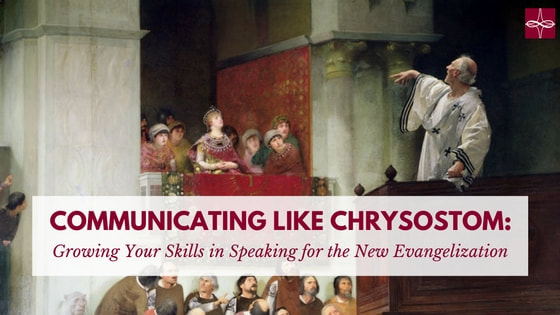
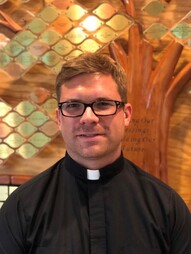
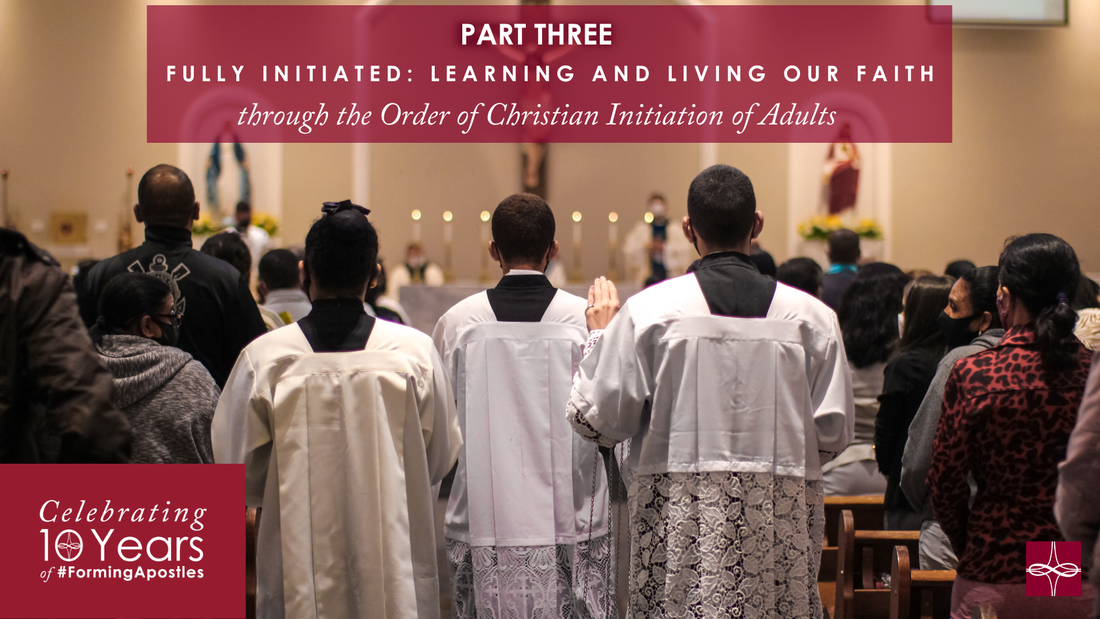
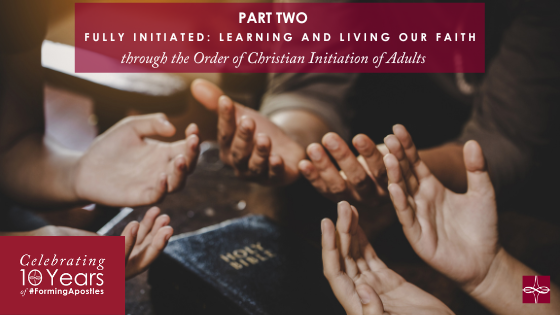
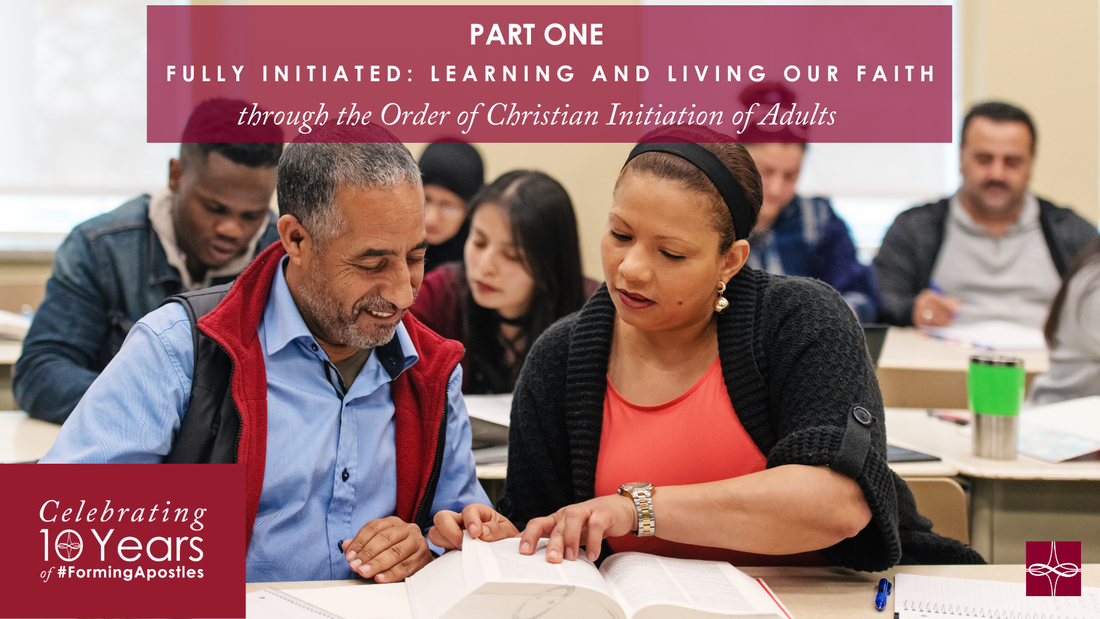
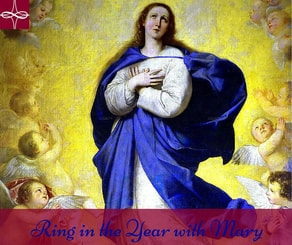
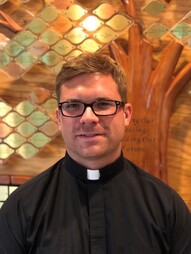
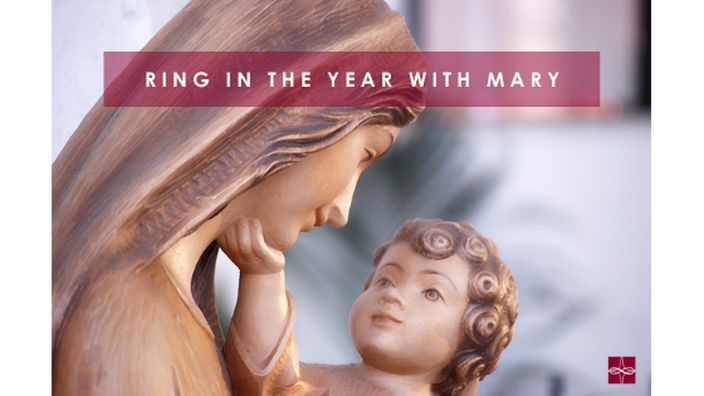
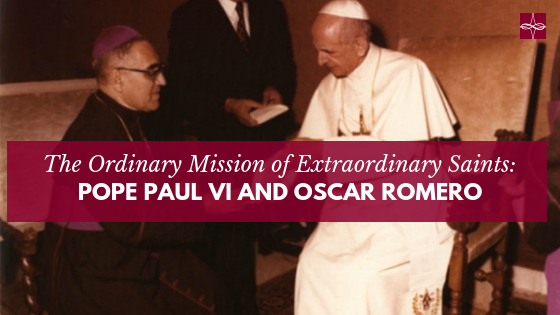

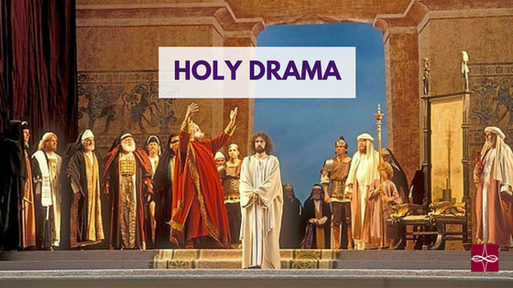

 RSS Feed
RSS Feed